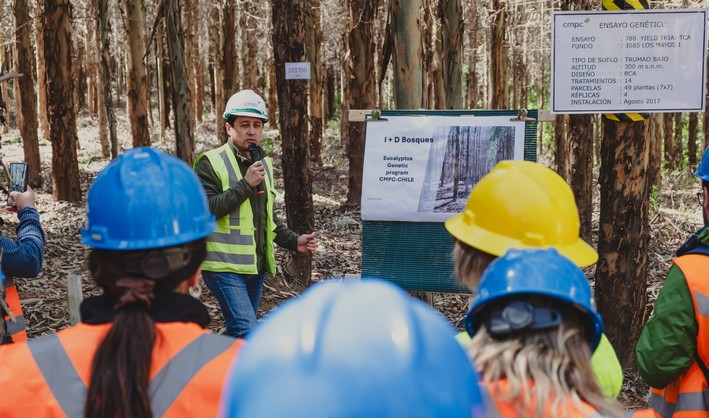Response from the College of Forestry Engineers to the Column by CONAF's Director on DL 701
In aopinion columnpublished last Friday, CONAF's executive director, Christian Little, makes a series of claims to justify the repeal of DL 701, included in President Boric's government program. As the College of Forestry Engineers of Chile, we wish to highlight our stance on the issue.
We are pleased that the CONAF director begins his column by stating that "today, the relevance of the forestry sector for national development and mitigating the effects of climate change is recognized."
Secondly, it must be noted that DL 701, as a promotion and subsidy tool, has not been functional since the end of its first period of validity, i.e., since 1994, as after that date (in 1998), it was reformulated under Law 19.561, targeting small and medium landowners with eroded soils. Since 2012, the bonuses no longer exist, and this lawmaintained something very important: ensuring that what is harvested must be reforested by law and that forest owners, instead of paying minimal taxes on presumed income as before, continue paying first-category taxes, thanks to this decree. So why repeal it?
DL 701 subsidized approximately half of the 2.3 million hectares planted today, also contributing to the control of dunes across about 9,000 hectares and promoting the establishment of nearly 60,000 hectares of Atriplex (a plant for goat feed) in the Norte Chico region. It was always open to native forest plantations but did not subsidize summer irrigation, essential for native species to survive on degraded soils.
Many countries have tried to replicate Chile's experience, with Uruguay being a notable example, where in 35 years, the forestry sector went from zero exports to becoming the top export category, surpassing agriculture and livestock.
Regarding sustainability, this professional College fully embraces the concept and recalls that it rests on three pillars: social, environmental, and economic. Chile's forestry sector is largely certified by the world's most demanding sustainability standards, such as FSC and PEFC, and undergoes annual audits by strict foreign auditors. In other words, our forestry sector is, for the most part, sustainable.
We do not share the view of downplaying the economic factor, except in areas where protection is imperative, whether due to slopes or in national parks and reserves.
We are also glad that it is acknowledged that "the original objective of DL 701 focused on soil conservation and erosion prevention in degraded areas," recognizing, in passing, the work of many professionals and a vast workforce dedicated to the enormous task of reforesting lands where our compatriots in the early 20th century burned native forests, practiced agriculture on steep hills, and abandoned them to severe erosion (the worst ecological tragedy).
In reforesting those areas, as the CONAF director rightly points out, some zones with native forests or scrublands were cleared, which we of course reject. But (in the broader perspective) over two million hectares were reforested, and if we double the figure the director cites as replacement, 85% would have been eroded soils, while 15% involved native forests or scrublands—a practice that has long been rectified and no longer occurs. Sustainability certifications do not qualify plantations that replaced native vegetation from 1994 onward.
Logic would suggest that this decree fulfilled its purpose, at least by 85%, and thus, it cannot be judged solely for the remaining 15%. Moreover, it succeeded in creating a forestry industry that exports six billion dollars annually, meets all the country's timber and pulp needs, protects native wood extraction, generates jobs supporting nearly a million Chileans, and has contributed taxes to the state dozens of times over what was spent on forestry subsidies.
The director claims that poverty is higher in rural areas with forestry plantations, suggesting they are responsible. He also attempts to compare them to urban areas, where services and jobs of all kinds exist. We strongly disagree.
Many of our College's members witnessed and lived alongside rural poverty during the early years of plantations, especially in the 70s and 80s. Some critics were very young and likely unaware of the hardships in Curanilahue and Lota, the rural poverty in Cauquenes and Chanco, or that along the Coastal Range between the Seventh and Ninth Regions, where subsistence farming was the norm and scarce municipal jobs provided minimal relief.
What would these rural areas be without the current forestry sector?
The quality jobs of operators of sophisticated machinery, the thousands of small restaurants and lodgings that depend on the sector, the hundreds of vehicles—from large trucks to supervisors' and rangers' pickups—supporting countless garages, tire shops, and related businesses; the thousands of workers in forestry contractor SMEs who plant, prune, thin, harvest, transport, build roads and bridges; the countless quality jobs created by ports and rail transport in the Eighth Region, whose tonnage far exceeds all other products, etc.,do they not help reduce poverty?
As forestry professionals, we learned that, in simple terms, there are three types of soil: irrigated agricultural (1), livestock (2), and forestry (3). The more type 1 soils, the wealthier the commune; the more type 3 soils, where neither agriculture nor livestock is viable, the harder it is to overcome poverty. Forestry plantations have been established precisely in these areas, where no other productive alternatives exist. How unfair it is to suggest that plantations create poverty! The correct comparison is with them versus without them.
According to the UNDP 2005, the increase in the Human Development Index (1994-2003) in forestry communes was 16.92%, compared to 12.6% in non-forestry communes, between the Maule and Los Lagos regions.
Regarding alternative forestry development options, we still do not fully grasp the term agroforestry (agriculture requires irrigation, forest species do not). Nor do we entirely understand the diversification of cultivated forest species. Reasons: where soils allow agriculture and livestock, fine, proceed. Where they do not, proceed with forest species.
In species diversification, Chile, through the Forestry Institute, conducted a study in the 1960s, from the Fifth to Tenth Regions, testing 162 different forest species. The result, after many years: pine and eucalyptus were by far the winners in all regions, except in the mountainous areas of Temuco, where Oregon pine prevailed. That is why these species are planted in this country. Scientific evidence.
We also do not want more negligent or intentional fires. For a forest investment to succeed, 25 consecutive fire-free summers are needed for pine managed for solid wood, and 80 to 100 years without fires for those planting or managing native forests if the investment is to be recovered. We forestry professionals suffer the most from fires. Enough impunity for those who cause these disasters.
Also related to the CONAF director's column, we emphasize that a serious study led by Chilean universities, UNESCO, and the Water Directorate, with data from numerous watersheds, indicates that soils covered by forests (native or planted) contribute more water to underground aquifers than they consume, precisely because they capture winter rainfall (80% of annual precipitation) during periods of low tree activity, and their "umbrella effect" ensures high water absorption in the soil—unlike bare soil, where rain runs off into rivers and the sea within hours.
As Forestry Engineers, we are fully open to dialogue and discussing alternatives to enhance the country's forestry development, creating new laws that promote plantations, biodiversity, national parks, and sustainable native forest management. We hope to be enthusiastically invited to participate, just as we have been present in the agreements of the Forest Policy Council, which cannot be overlooked in shaping the future.
The above does not contradict recognizing the environmental, social, and economic benefits plantations have brought to the country, nor does it criticize the ineffective policies promoting native forest management caused by past and present legislation.
Source:www.elmostrador.cl

















